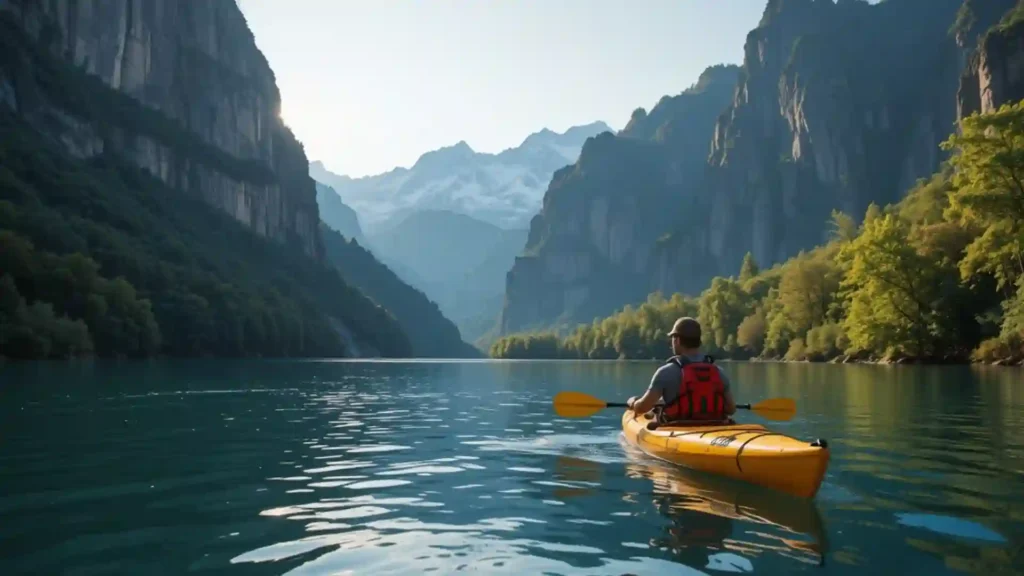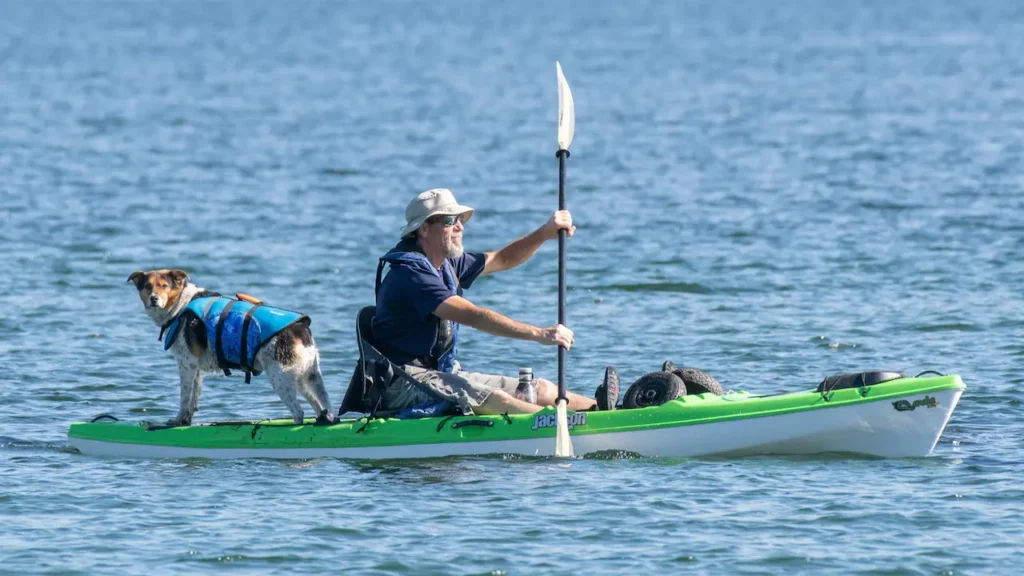Kayaking brings excitement and thrill. Going solo in kayaking brings more excitement, peace, solitude, and a sense of personal challenge. But, dangers, sometimes, come along with solo kayaking. A partner can help in the situation when danger comes.
Below, we’ll explore why kayaking alone can be dangerous, with recommendations to ensure your safety on the water.
The Risk of Accidents and Injury
Kayaking, while generally safe, involves potential hazards such as –
- Capsizing
- Colliding with obstacles like rocks or trees
- Experiencing sudden changes in weather or water conditions
There is a possibility that you will get immediate help if something goes wrong when kayaking alone. In these situations, it can be difficult, if not impossible, to rescue yourself without help.
Most people who kayak in groups do so for safety reasons. Even for seasoned kayakers, accidents can happen. If you’re alone and capsize, getting back into your kayak can be very challenging, especially in cold or fast-moving water.
For example, if you’re paddling on a river with strong currents or in an area with unpredictable weather, a fall from your kayak could result in hypothermia or injury.
In cold-water conditions, hypothermia can set in quickly, even if you’re a strong swimmer. Without someone nearby to assist, your survival chances could drastically diminish.
Limited Ability to Perform Self-Rescue
Self-rescue is the ability to get yourself back into your kayak after a capsize. Experienced kayakers may be able to perform a self-rescue in calm waters. But it’s much more difficult in turbulent or rough conditions. This becomes a serious concern when kayaking alone.
Self-rescue techniques are part of most kayaking training programs. However, performing a successful self-rescue is not always easy. Many factors come into play, like water temperature, your skill level, and the type of kayak you’re using. It’s always safer to have someone with you to help in case things go wrong.
In kayaking, having a partner and having no partner make a huge difference. When you’re by yourself, the absence of a partner to assist with a rescue can make all the difference in life-or-death situations.
A second person can help you for safe kayaking, like-
- May help you re-enter your kayak
- May provide emotional support
- Can calm your nerves
- Call for emergency help if needed
Unpredictable Weather and Water Conditions
The weather may be unpredictable. The water conditions can change quickly. Strong winds, heavy rain, or sudden storms can create dangerous conditions that are difficult to manage alone. Group kayaking offers the advantage of shared knowledge and collective problem-solving in these situations.
Weather conditions are always a consideration when kayaking, and the forecast is not always 100% accurate. In an emergency, it’s much easier to manage challenging conditions with a group. With one person, if something goes wrong, the odds of survival decrease drastically.
Submerged rocks, debris, or rapids can pose significant risks. Paddling in fast-moving waters or near ocean currents also requires constant attention. In these situations, a group can better navigate the waters, look out for one another, and make critical decisions together.
The Psychological and Physical Strain of Solo Kayaking
Kayaking requires stamina, focus, and endurance. When you kayak, mental and physical demands increase, but when kayak alone, they increase more rapidly. You must constantly be vigilant about your surroundings, when you are alone.
Solo kayaking in long trips can set fatigue, especially in challenging conditions.
The psychological strain of being alone can be taxing. When you’re with a group, you can share in the experience, support one another, and take breaks. But when you’re by yourself, there’s the added pressure of being responsible for your own safety. This can lead to poor decision-making, fatigue, and even panic in emergency situations.
Solo kayaking brings challenge that you want to win, but when something unexpected and complicated happens, your heart stop to pulse. Your hormone changes and intimidation makes you weak, and the situation more complicated.
Additionally, solo paddling makes it harder to take breaks and share the workload. In a group, paddlers can rotate to ensure that no one gets overly tired. If you’re by yourself, long stretches on the water can leave you feeling physically and mentally drained, which could impact your judgment and ability to read the water and react in an emergency.
Limited Communication and Assistance
People rely on each other in a group of kayakers. Anyone can communicate with other members of the group when helps needed. It can be done in multiple ways by using radios, signaling devices, or simply hand signals. A group can stay connected and coordinate more effectively, when paddling in challenging conditions.
Communication is key, especially in remote areas where help may not be readily available. In a group, you can rely on others to keep an eye on you, help in an emergency, and assist with navigation or decision-making. Alone, you’re much more vulnerable, and if something goes wrong, your options are severely limited.
Additionally, if you are in a remote area or paddling on an unfamiliar body of water, it is essential to know the surroundings properly before getting into the water. If you can’t do it by yourself, it’s crucial to have others around who know the area or have access to navigation tools like maps or GPS.
Without the ability to communicate or access help quickly, solo kayakers may find themselves in peril.
Experience Can Save You
Gain some experience before getting into whitewater or sea kayaking. Solo kayaking is not recommended for beginners or those unfamiliar with water safety practices.
Experienced kayakers might be more confident in their ability to handle emergencies or difficult water conditions on their own than novice ones. Experts insists of paddling in groups, when exploring unfamiliar waters or challenging environments.
Paddling with others is important because you have a better chance of overcoming challenges as a group. Even advanced kayakers who are comfortable with self-rescue techniques prefer to paddle with others because of the added safety, fun, and shared experience.
Experienced kayakers know their limits and understand that safety is more important than the desire for solitude.
Always Paddle with a Partner for Safety and Enjoyment
While solo kayaking can provide a sense of adventure and tranquility, it’s not the safest option for most paddlers. The risks involved, including injury, weather changes, limited communication, and psychological strain, make it far more dangerous than paddling with a partner or group. Kayaking with partners ensures that you have the backup support, shared decision-making, and collective expertise needed to safely enjoy the sport.




